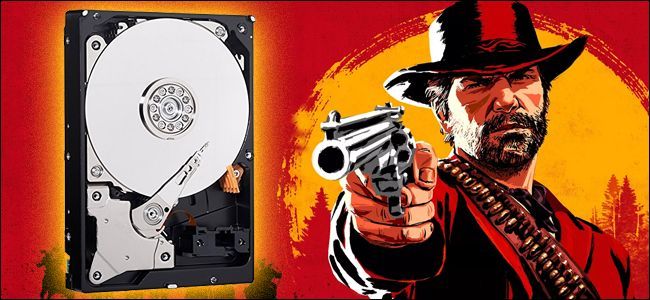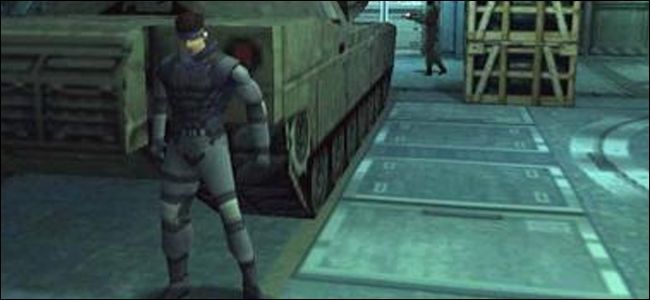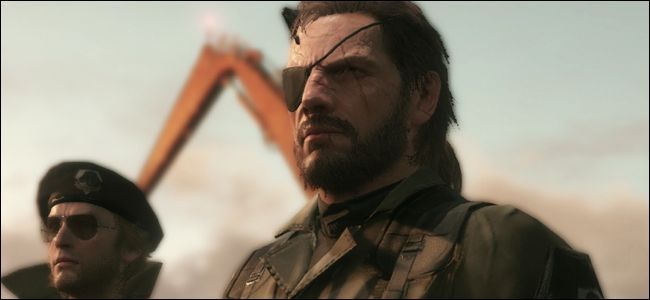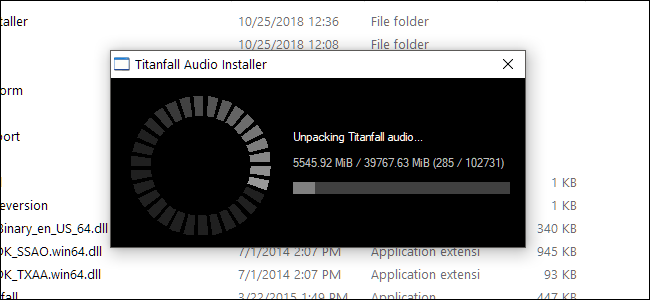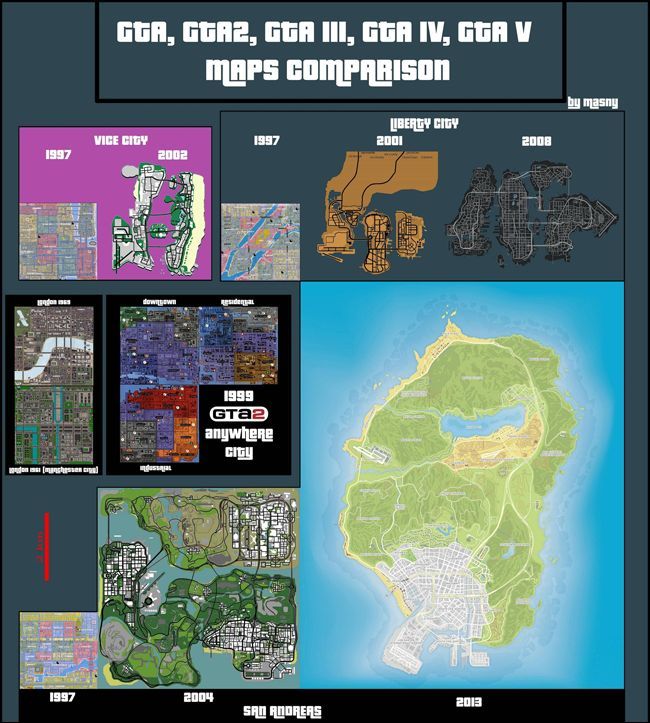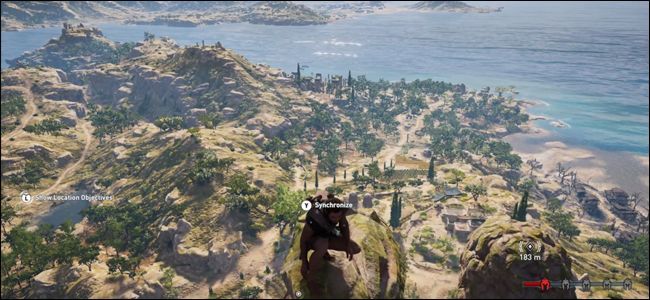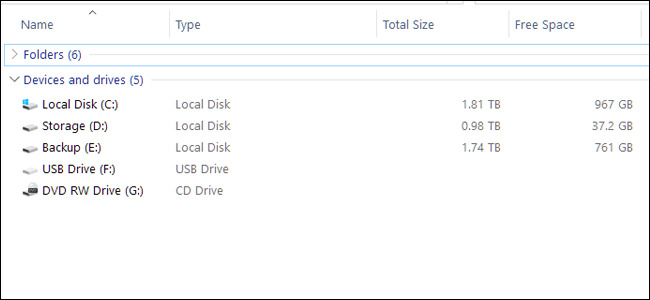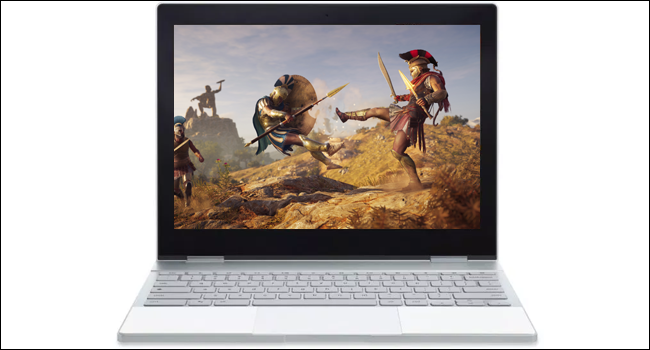Quick Links
Red Dead Redemption 2: 105 GB of storage space required. Shadow of War: 98 GB. Final Fantasy 15: almost 150 GB. Why the hell are these games taking up so much room on your hard drive?
There are a few different factors at play here. And to be specific, we're talking about big, AAA 3D games, not the likes of Minecraft or Stardew Valley. But in the simplest possible terms, there are three primary reasons: game files are getting bigger, game worlds are getting bigger, and available storage space is getting cheaper. Let's examine them.
High-Resolution Game Files Are Bigger
Wind the story back about 20 years, to the early days of 3D gaming. Back then both the characters and environments in 3D games were simple, as developers were just coming to grips with the tools of a new art form. Here's a look at what Solid Snake, of the venerable Metal Gear franchise, looked like in Metal Gear Solid in 1998.
Metal Gear Solid was cutting edge at the time, offering some of the most impressive 3D graphics available on any console. But today Snake looks blocky and simple: you can practically count the polygons that make up his head, and the textures (two-dimensional images laid over the polygonal models like wallpaper to give them definition) are blocky and pixelated.
That's because the original PlayStation had only a fraction of the power of modern PCs. Not only were these older consoles incapable of rendering more complex characters and environments, but they also didn't need to: the PS1 could only output video at a resolution of 320x240 for most games. If you're reading this article on a recent cell phone, that's less than one square inch of its small but high-resolution screen.
That was about all the fidelity needed to max out the capability of a 1990s television. Accordingly, game sizes with simpler 3D models and low-resolution 2D textures were smaller: across two compact discs, Metal Gear Solid took up about 1.5GB of storage space. PC games could be bigger and produce more high-resolution graphics, but they were still a fraction of the size of modern games.
Now let's look at a modern version of this character for comparison: Solid Snake from Metal Gear Solid 5, released in 2015.
Snake's face is almost photo-realistic: aside from a few angles on the eye patch and hair, it's hard to tell this is a collection of polygons and textures and not a real person. Those textures are essential, too: they're now packed with enough resolution that players viewing them on a 1080p or 4K television won't see pixelated blocks (except when they zoom in close on something).
Even more visual information, like modified surfaces for lighting effects, different materials that behave in different ways in the physics engine, and things like floating particles for smoke or fire, add layers upon layers to the complexity of the graphics. And all of this is happening in real time, in a game engine that the player can interact with, not a pre-rendered cutscene like a CG movie. Is it any wonder that MGS5 takes up twenty times the space of the original game?
More complex 3D models and 2D textures aren't the only part of this equation. Sound data has become more complex as well. The soundtracks of cartridge games only had a few rudimentary notes play with, and even though they replicated some impressive ranges of music, they had to fit into file sizes smaller than any image on the page you're reading right now.
In comparison, the high-fidelity music and sound effects of modern games are gigantic, not to mention the files for every line of dialogue and every random grunt or gasp of the character. Sometimes these sound files are also uncompressed, more like music on a CD than an MP3, so the console or PC's processor isn't burdened with an extra layer of processing in addition to the game running. In Titanfall's PC version from 2014, the game included 35GB of space that was just for uncompressed audio.
Game Worlds Are Getting Bigger
In addition to the graphics and audio of modern games increasing in complexity, games themselves are becoming massive. Take a look at this comparison chart for the Grand Theft Auto series. GTA III from 2001 was considered one of the biggest free-roaming games ever made at the time of its release, but developers tripled the size of its game map just three years later with GTA: San Andreas. The latest game in the series, GTA V, has a map of more than ten times its size, covering many more types of terrain and environments.
This isn't a hard and fast rule: some more structured games, like Overwatch or Street Fighter, only have a few different stages. Accordingly, they're much smaller in terms of file size. But the explosion of open world games over the last ten years has created something of a race between developers and publishers eager to create the biggest possible seamless game maps.
Far Cry, Assassin's Creed, Just Cause, Borderlands, The Elder Scrolls, Fallout, and The Witcher: some of the most popular titles on the market have enormous game worlds that scale up the increasing size requirements exponentially. Just Cause 3 boasts a game area that, if scaled to the real world, would be 20 miles on each side. A lot of those worlds use related assets---for example, the same texture for a patch of rock or a concrete wall can be used over and over again. But bigger maps and areas just require more data.
Even games that follow a more conventional level-based approach like Doom are getting much bigger, just because levels are bigger than they used to be and the graphics and audio files have to scale up. Unique visual elements require dedicated files in the game's storage. The more levels you have, and the bigger those levels are, the more storage space is required.
Storage Is Getting Cheaper; Internet Is Getting Faster
My first computer in the mid-90s had a 40 GB hard drive. (And at the time, my father marveled at the excess, noting that the room-sized supercomputers he used at Lockheed in the 70s and 80s had about a tenth of that.) The desktop PC I'm typing on has four terabytes of space between an SSD and one hard drive---100 times as much storage capacity as my old Compaq. And this is hardly a phenomenon limited to PCs: this year Apple sold its first phone with 512GB of storage, and some Android phones can have more than a terabyte thanks to MicroSD cards.
Storage capacities aren't just getting bigger, they're faster too, thanks to solid-state memory increasingly replacing spinning hard drives. But even if you want more storage with a conventional hard drive, that storage is also getting cheaper. A PC hard drive with 4TB of space---enough to beat my dad's old supercomputer by literally a thousand times---can be had for about $100. Getting that kind of space pre-installed on your new computer or console isn't quite so cheap since manufacturers like to make a profit on every upgrade, but it's still incredibly inexpensive compared to what it used to be. The cheapest models of Xbox and PlayStation now come with 1TB hard drives, despite costing only $300 for the whole machine. It makes the "groundbreaking" hard drive on the original Xbox look paltry in comparison.
For gamers, this is a mixed blessing. Now, for faster game processing, every large game insists on being installed to the hard drive, even if it comes as an old-fashioned disc you buy in a store. In a 1 TB hard drive, you can fit somewhere between 20 and 30 major AA games, or maybe just ten if they're all whoppers like Final Fantasy 15. Hard drive space fills up quickly, and you're forced to uninstall older games if you want to play newer ones.
No big deal, you can download them anytime you want, right? That's true. And modern internet connections are much faster, at least for most people who live near a big city. But even with a very good 100 Mbps connection, a 50 GB game needs over an hour to download. You'll need more like five hours on a typical 25 Mbps connection, and that's assuming you can get an ideal download from the server---PlayStation servers are notoriously slow even on the best internet. Add data caps into that mess, and it leads to a lot of headaches.
Here's an illustration. The image above is my current primary PC storage drive, just under 900 GB full. The red area is games from Steam, Origin, and Blizzard, almost 500 GB for a handful of modern titles. The green area is my ROM collection, hundreds and hundreds of console games from the 80s, 90s, and 2000s---a little more than one-tenth the size of my modern games. The blue area is the files the Windows OS needs to operate.
Between bigger drives and faster connections, developers have gotten sloppy about file sizes. After all, if your player has 1 TB of storage, what's the problem with a 100 GB game that only takes up a tenth of it? Twenty or thirty years ago, limits of the medium forced developers to be stingy with their file sizes---the reason that Scorpion and Sub Zero look so similar in the original Mortal Kombat is because they're the same texture files, tweaked just a little to make them different colors. Now developers don't have to worry about optimizing games for storage---though perhaps they should if only to save their players the frustration of constant installations and deletions.
Will This Get Better?
Probably not, at least in the short term. Games are just going to get bigger and more complex, and they're probably going to do so at a pace that's much faster than the expansion of available storage space. This is an aspect of modern gaming we're going to have to live with for a while.
There is one thing that might shift this equation: game streaming. Companies like NVIDIA and Sony already offer full AAA-style games, streamed over a high-speed connection. This setup does all of the heavy-duty work of graphics and storage on a remote server, so all that's necessary for you to play locally is a controller, a screen, and a small program to display the remote game. Google, Nintendo, and Microsoft are investigating the same technology for upcoming services.
But this isn't an ideal solution. Like streaming video services such as Netflix and Hulu, streaming game services are limited in terms of libraries, drawing only those games for which they've negotiated the rights. It's likely that, whatever service you choose, there will be a few games you want that aren't available on it. And streaming games requires a much broader and much more stable internet connection than streaming video. In addition to a wide "pipe" for lots of data, you need a low-latency connection that allows requires only a tiny fraction of a second to send images and sound to you and relay your controller commands back to your server. 25mbps is a bare minimum for good 1080p streaming games, and more complex 4K titles will require, well, about four times as much.
If you're on a desktop PC and you're feeling the storage crunch, I recommend investing in a cheap expansion drive. You can move game files off your primary drive or SSD and restore them only when you need them. Laptop options are more limited, especially with newer thin-and-light models that don't allow users to access the hard drive. The Xbox One and PlayStation 4 both support external hard drives that can store game files, and do-it-yourself types can replace the internal storage drive (just like on a PC) if they're willing to void their console warranty.
Image credit: Wikipedia, Steam, GTA Forums/Masny, Amazon

